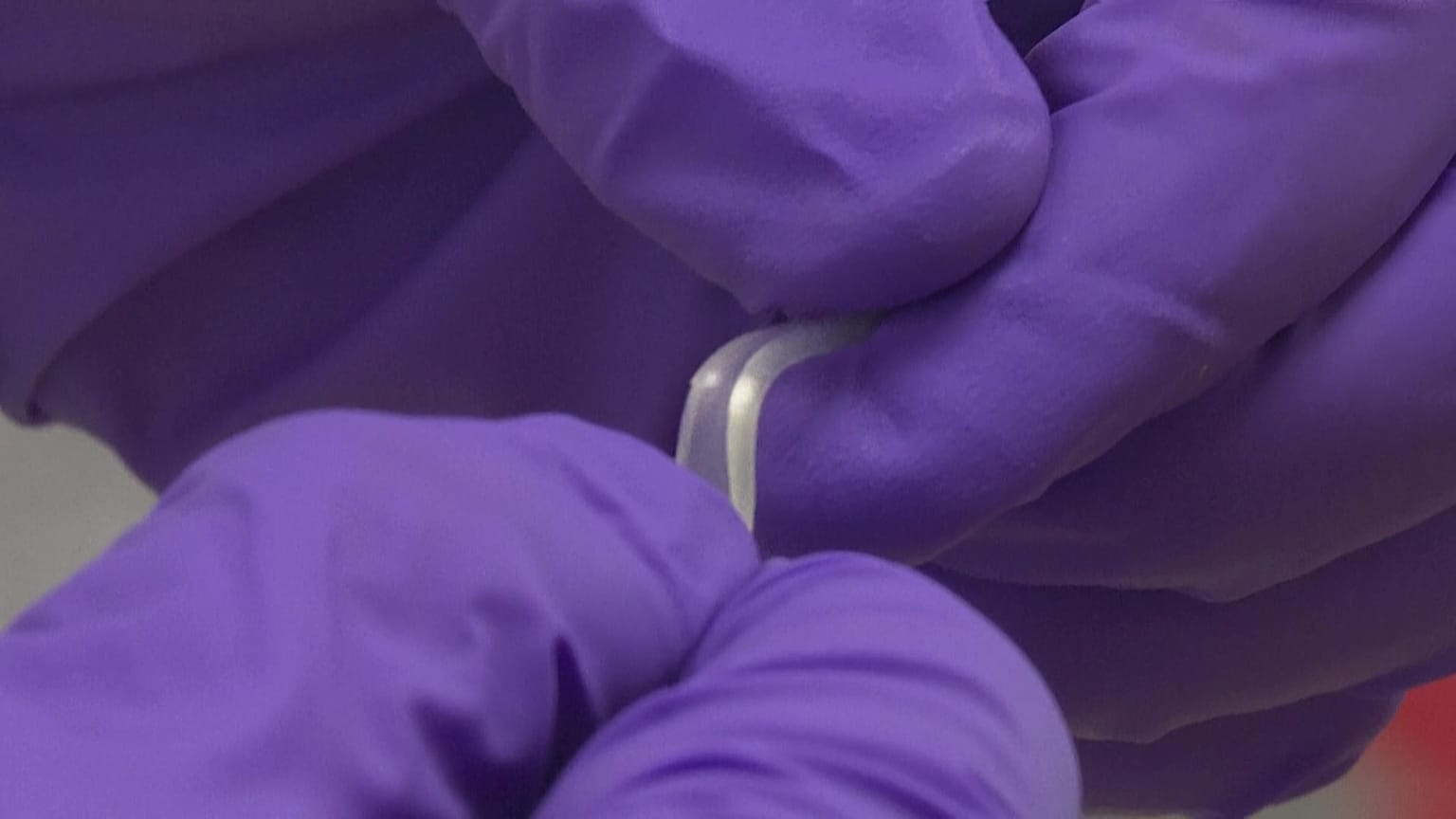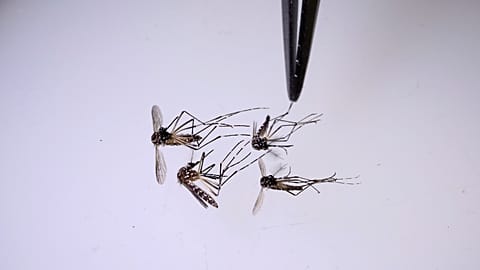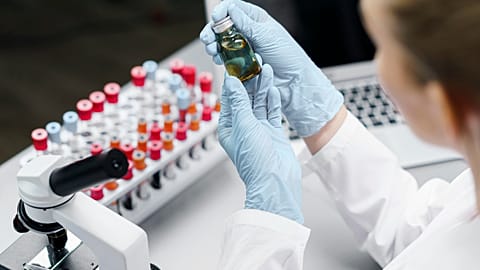The research team behind the new "jelly batteries" say they can mould to human tissue, making them "promising for future use in biomedical implants".
Researchers at the University of Cambridge say they have successfully developed a "game-changing" battery that could be used in our bodies to power soft robotics and wearable devices.
It marks the latest stride in flexible electrically conductive hydrogel materials being used for bioelectronic applications.
"Electronics as we know like our phones and our computers are very rigid, whereas our body is mostly water, it's very soft,” Stephen O'Neil, a PhD researcher at the University of Cambridge and the first author of the study, said.
"What we tried to do is make electronics soft and stretchy to be able to interface either inside our body or on our skin, and the way we did this was we made hydrogel materials that are ionically conductive".
Made of a series of hydrogels layered to make an electric current, the batteries look like jelly-like strips.
Inspired by electric eels
According to the researchers, the new battery was inspired by electric eels which stun their prey with electrocytes, their modified muscle cells.
While hydrogels have been used in the body to provide electricity before, this is the first time they have been given a stretchable property, according to the Cambridge researcher team.
Hydrogels are ideal candidates for soft robotics and bioelectronics due to their precisely control mechanical properties and mimic the characteristics of human tissue.
"It’s difficult to design a material that is both highly stretchable and highly conductive, since those two properties are normally at odds with one another," O’Neill said in a statement.
"Typically, conductivity decreases when a material is stretched," he added.
The 3D networks polymers in the hydrogels are tied by reversible on/off interactions that control the battery’s mechanical properties, according to researchers.
"Normally, hydrogels are made of polymers that have a neutral charge, but if we charge them, they can become conductive," Jade McCune, a co-author of the study, said.
"And by changing the salt component of each gel, we can make them sticky and squish them together in multiple layers, so we can build up a larger energy potential," McCune added.
The soft, stretchable "jelly batteries" could even be implanted in the brain to deliver drugs or treat conditions like epilepsy.
Stretchable and self-healing
The jelly batteries can be squashed or stretched without losing their original shape and conductivity thanks to strong adhesion thanks to reversible bonds that can form between layers using barrel-shaped molecules called cucurbiturils.
The hydrogels can also self-heal when damaged, according to the researchers.
The team behind the study says the properties of the jelly batteries can mould to human tissue, making them "promising for future use in biomedical implants".
"We can customise the mechanical properties of the hydrogels so they match human tissue," said Oren Scherman, the director of Cambridge's Melville Laboratory for Polymer Synthesis, who led the research in collaboration with Professor George Malliaras from the university’s Department of Engineering.
"Since they contain no rigid components such as metal, a hydrogel implant would be much less likely to be rejected by the body or cause the build-up of scar tissue," Scherman added.
The University of Cambridge says the hydrogels will be tested inside living organisms before they can be considered for medical applications.
For more on this story, watch the video in the media player above.


















